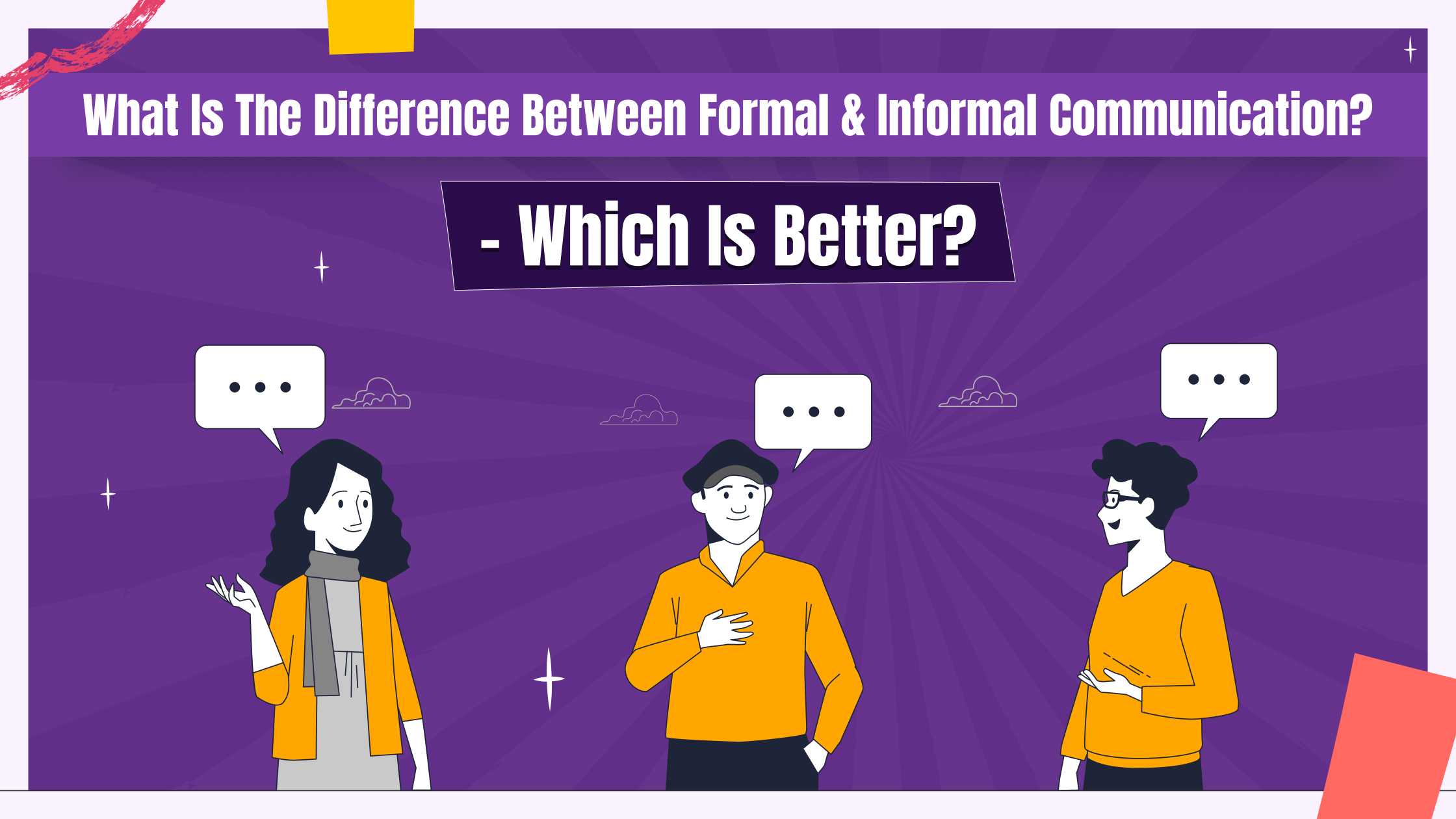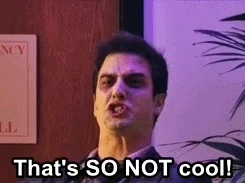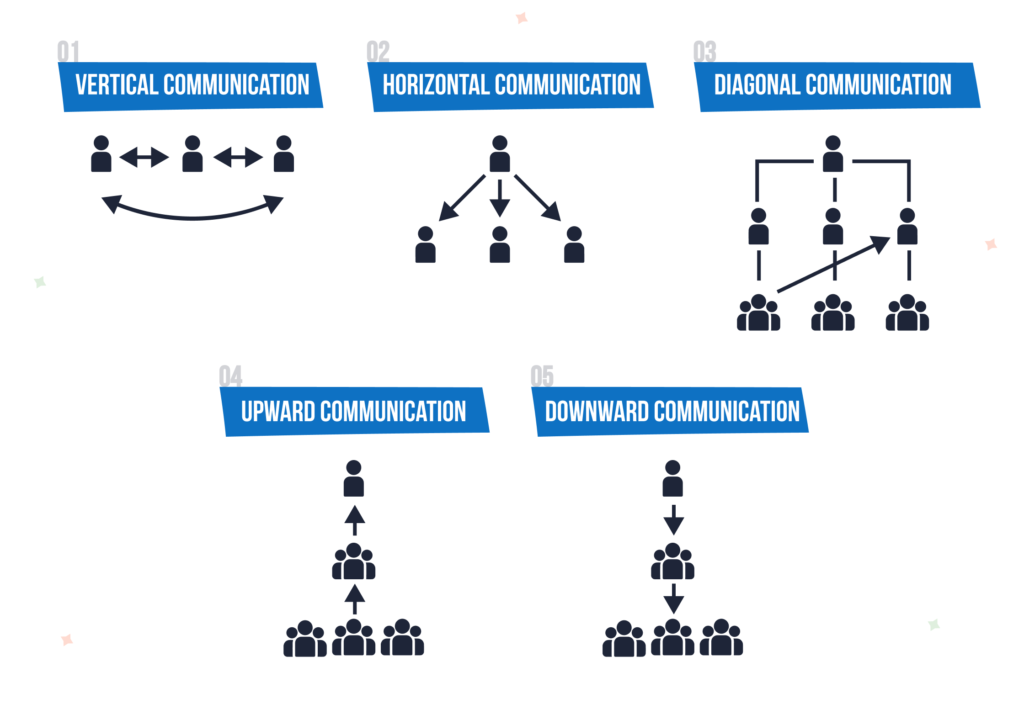UBS App is now Superworks

What is soothing if someone told you,
Or
Everywhere, communication plays an essential role. Even at the workplace, everyone can cooperate via communication only. Sharing thoughts by communicating is the key role of productivity.
There are two channels of communication –
People often confuse these two. What are they? Where to use them? Which is beneficial? What are the types of formal or informal communication? In this article, we’ve come up with a thought which will clear all your doubts between formal and informal communication and the difference between them as well.
Formal communication- a name suggests the meaning only. It’s also called official communication. This type of communication is defined because of communication in which information is passed through routes and channels. The main aim of formal communication is to converse with teammates, seniors, heads, managers, and juniors as well.
Formal communication is taken into account as effective communication as it saves time through its proper flow of communication. The most superior and subordinate conversation comes under formal communication. Though it is a good method for routes and channels, it is not so cool because of rules and regulations.

Formal communication refers to the flow of official information through emails, papers, or documents. The flow of data is controlled effort to be properly communicated. Employees are sure to follow formal communication channels while performing their duties.
Formal communication is taken into account effective as it is a timely and systematic flow of communication. Formal communication leads to low cordiality among relationships between subordinates and superior authorities.
Informal Communication= Not A Formal Communication.
Communication that doesn’t undertake formal methods to communicate is known as informal communication.
In comparison, informal communication refers to multi-dimensional communication. Informal communication is a spontaneous kind of communication in which the subordinates. Mates and even superiors can talk freely. There are not any official rules, guidelines, or systems to speak.

One of the major advantages of informal communication is that it is very flexible. There are no rules, regulations & rigidity, or any kind of formality to hinder communication. Informal communication is especially quick.
The only disadvantage of this communication is rumors or misinformation spread at rapid speed.
Formal communication can sound complex and convoluted, but generally, formal communication is governed by command and follows organizational conventions.

Within the formal communication and structure set of tone, you can do the communication. These are the types of formal communication:
Vertical communication is held on various levels. In this, the message is passed from seniors to juniors or juniors to seniors. You can consider upward or downward communication vertical communication.
Horizontal communication takes place among the same or different departments. It refers to communication between individuals who are at similar levels within an organization but have different areas of responsibility. Consider all chief manager roles, marketing managers, sales managers, leads, etc.
Diagonal communication takes place among the subordinates working on different levels. For example, the marketing head communicates with a junior graphic designer. This occurs when employees of different departments at different levels communicate with each other irrespective of the chain of command to work.
During upward communication, knowledge is transmitted from a lower to a higher level. It is vertical communication, and the subordinate communicates with the seniors. This type of communication boosts the morale of the employees. It includes suggestions, reports, requests, and complaints.
13 Best Employee Engagement Fun Friday Activities to Break the Boredom
During downward communication, knowledge is transferred from the higher to the lower level. Downward communication is an efficient way of communication if any higher authority wants to transfer knowledge or talk. Downward communication represents the stereotypical form of formal communication. Emails, reports, letters, and manual communication are commonly used in this.
Examples Of Formal Communication:
Informal communication is cool, easy to connect, and easy to talk communication. These are a type of informal communication.
A single chain is a type of communication, where person 1 passes information to person 2 and, person 2 passes it to person 3. This is often how the single-chain moves in informal communication.
A cluster chain communication works when 2 or 3 people start a trend that is followed by others. You can consider social media as an example of a cluster chain wherein one person begins the trend/ challenge. It is possible that each individual will expire the information to the next cluster network.
Gossip is the one kind of communication where one can pass information to several people. This type of communication is very common when they make teams and they wanted to spread something.
This is the probability that anyone can choose the person to pass the communication. Anyone can transfer information to them and they also do the same later on.
Example Of Informal Communication:
Wherever employees interact in a conversational and casual way are examples of informal communication. One of the great informal communication examples is to think of it as a conversation between family members.
Etc.
So, these are some of the significant differences between formal and informal communication. Check below:
| Formal Communication | Informal Communication |
| Formal communication has rigid rules and regulations. | There are no rules and regulations in informal communication. |
| Formal communication is reliable as it has proper documentation. | Informal communication is not as reliable as it is a casual one. |
| It is known as official communication. | It is known as grapevine communication. |
| Formal communication takes place through formal channels or routes. | Informal communication takes place between two or more people unofficially. |
| The process is slow. | The process is rapid. |
| It includes mostly written communication. | It includes mostly verbal communication. |
| There is a systematic flow in formal communication. | There is no flow but work-related issues in which time is saved. |
| Secrecy is maintained. | Secrecy is not maintained. |
| Authenticity is maintained through official channels. | Authenticity is not maintained. |
| It is used to fulfill organizational objectives. | It is mostly used to meet personal interests, and share knowledge and needs. |
There are pros and cons to both formal and informal communication. They both have the significance of doing for the right place. Formal communication is important for the workplace, but informal communication is also useful because it can bridge gaps between departments and create a sense of belonging.
Informal communication is a plus to business because if employees have friends to communicate with they will enjoy their job more, however sometimes it misses details. Unofficial or unconfirmed information is often spread to employees, resulting in mass disinformation.
In this blog, we’ve discussed the differences between Formal and Informal Communication. What do you think about formal and informal communication networks? We sincerely hope that this blog gives you proper information about communication types.
Most organizations have their channel, as UBS provides chat software in that you can do both formal and informal communication as well. You can create a channel for formal discussion, and do conversations through mail as well. Or you can directly message anyone as informal communication. Make productivity high with the UBS – chat platform and enhance business growth.
All the best!
We are here to help you find a solution that suits your business need.
Get a visual representation of how we work!
Schedule DemoOur sales expert is just one call away to meet your needs.
Get In TouchHave a question?
Chat with Us